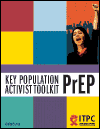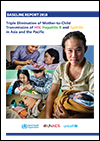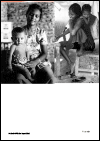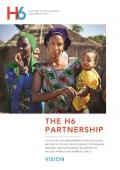What's New
Displaying results 1291 - 1300 of 4911

Resource | Tools,
This toolkit focuses on preventing HIV among key populations – sex workers, people who inject drugs, transgender people, and gay men and other men who have sex with men. Globally, key populations are 10-24 times more at risk of contracting HIV than adults in the general population.3 In 2015, infections among key populations accounted for 36% of all new infections.

Resource | Publications,
For the past fifteen years, ITPC has succeeded in building capacity of communities in every region of the world to identify and address long-standing and emerging public health problems. Working closely with a global network of activists that includes coalitions of key and vulnerable populations, ITPC provides treatment information and education to encourage people most at risk to seek testing, optimal treatment and quality health care.

Resource | Publications,
For people who may have been exposed to HIV, knowledge is critical to making informed decisions about their future. An HIV test is a serious event with potentially serious outcomes. But no matter the result, the test provides vital information. A negative result is an opportunity to take deliberate steps to prevent future acquisition through prevention methods tailored to that individual’s risks. A positive test result—and a confirmatory diagnosis—is never welcome news, but for people living with HIV, it is a necessary first step towards a long and healthy life.

Resource | Publications,
Workers in certain industries may face particularly high risk of HIV, especially when they remain away from home and/or partners for long periods. Such industries include the military, mining, construction, security, petroleum, agriculture, fishing, long-distance driving and many others. The workers in such industries may not have easy access to HIV testing services, and the workplace may be the best place to reach them.
HIV self-testing (HIVST) is a testing option recommended by WHO that can be used to reach as-yet undiagnosed populations. This policy brief outlines key planning and implementation considerations for managers and implementers introducing HIVST at workplaces.

Resource | Publications,
The purpose of this document is to provide guidance to national AIDS programmes and partners on the use of indicators to measure and report on the country response.
The 2016 United Nations Political Declaration on Ending AIDS, adopted at the United Nations General Assembly High-Level Meeting on AIDS in June 2016, mandated UNAIDS to support countries in reporting on the commitments in the Political Declaration. The Political Declaration on Ending AIDS built on three previous political declarations: the 2001 Declaration of Commitment on HIV/AIDS, the 2006 Political Declaration on HIV/AIDS and the 2011 Political Declaration on HIV and AIDS.

Resource | Publications,
The global partnership’s goal is to reach zero HIV-related stigma and discrimination.
An opportunity to harness the combined power of governments, civil society and the United Nations, the global partnership will work together, using the unique skills of each constituency, to consign HIV-related stigma and discrimination to history.

Resource | Publications,
The Regional Framework for the Triple Elimination of Mother-to-Child Transmission of HIV, Hepatitis B and Syphilis in Asia and the Pacific 2018-2030 upholds the vision that every infant should be free of HIV, hepatitis B and syphilis. The framework presents an integrated and coordinated appoach towards the goal of achieving and sustaining triple EMTCT, emphasizing the principle of people-centred care and a human-rights-based approach for all women, children and their families, by promoting collaboration among programmes addressing RMNCH, HIV, hepatitis, sexually transmitted infections and immunization.
Triple EMTCT interventions accessed through RMNCH services include: preventing unintended pregnancy; early antenatal care to allow effective case detection during pregnancy; rapid diagnosis; timely and appropriate treatment in pregnancy as well as during and after childbirth; and partner testing and treatment. Closing gaps, avoiding duplication and identifying missed opportunities will improve the quality and efficiency of service delivery and result in better outcomes.

Resource | Publications,
The National Strategic Plan for the Prevention and Control of HIV/AIDS (2014-2018) guides the national efforts to maintain the low prevalence of HIV in the Maldives. The elimination of mother to child transmission (EMTCT) of HIV and syphilis in the Maldives is an important public health milestone reflecting effective and equitable national policies and services that place people first. Universal access to antenatal care and screening for syphilis and HIV is ensured through an extensive network of public sector hospitals, health centres and private health facilities. Prevention of MTCT of HIV and syphilis infection is given special attention within the Reproductive Health (RH) programme. An important target is to screen 100% of women attending ANC clinics for HIV and syphilis.

Resource | Publications,
The H6 Partnership vision — a catalyst for transformation in the United Nations to deliver health results for women, children and adolescents in support of the Sustainable Development Goals.

Resource | Publications,
Strong global commitment to end AIDS has driven huge progress. In 2017, around 75% of people living with HIV globally knew their HIV status and 59% of all people living with HIV were accessing treatment.
However, new HIV infections are not declining fast enough and too many people are still dying from AIDS-related illnesses despite the availability of high-quality and effective treatment. And with 36.9 million men, women and children living with HIV around the world, there are more people than ever before living with HIV. A quarter don’t even know that they have the virus.





